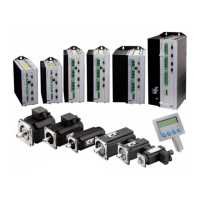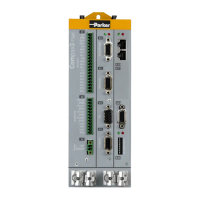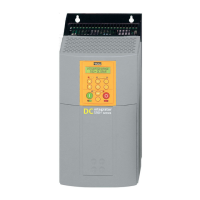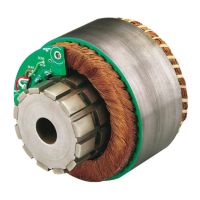Setting up Compax3
C3I12T11
192-120113 N08 C3I12T11 - December 2010
Display of the commutation error in incremental feedback systems
Rotor was turned in switched-off state.
blue: ideal position
red: unfavorable position
PM: magnetic flux of the permanent magnets
i
S
: Current pointer
∆ε
Commutation error
I’: ideal position
i
q
: Quadrature current (torque forming)
The automatic commutation function (AK) in Compax3 uses the position dependent
sinusoidal torque course of permanently excited AC synchronous motors. If the
motor windings are energized with DC voltage for instance, the motor develops a
sinusoidal torque depending on the rotor position, which can be used for example
by evaluating the resulting movement in order to determine the correct motor
commutation.
The automatic commutation with movement in the Compax3 has the following
properties:
The motor movement occurring during the commutation is, with correctly
parameterized function, very small. It is typically in the range smaller than 10°
electrical revolution (=10°/motor poles physically or 10°/360°*motor pitch for a
linear motor).
The precision of the acquired commutation angle depends on the external
conditions, however lies normally in the range better than 5° electrical revolution.
The time until the termination of the commutation acquisition is typically below
10s.

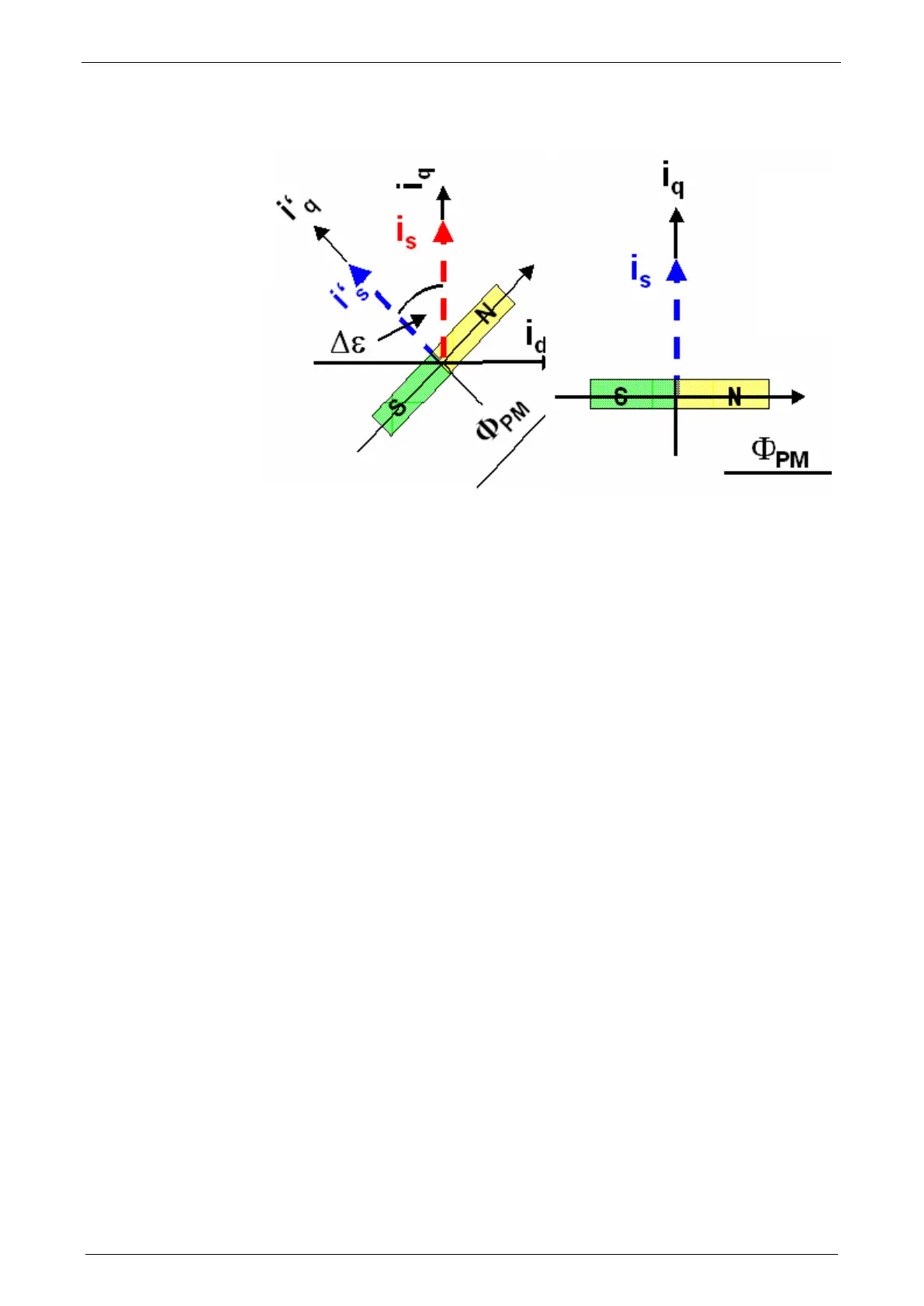